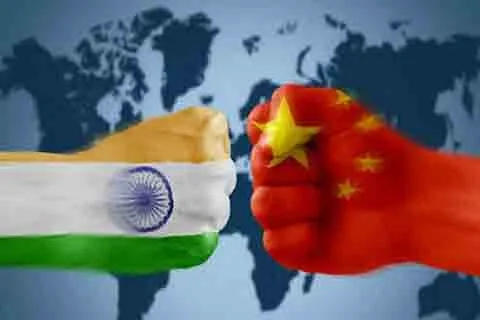China and India are properly handling and taking actions to ease the situation at the border based on the “consensus” reached recently during their diplomatic and military level talks, a senior Chinese official said on Thursday.
The Chinese Foreign Ministry spokesperson’s remarks came a day after the Indian and Chinese military commanders held “productive” talks to end the border standoff in eastern Ladakh, amid reports of a limited disengagement of troops by both sides from a number of friction points in the high-altitude region.
Asked about the details of the actions being taken by both the countries to ease the situation on the ground, Chinese foreign ministry spokesperson Hua Chunying told a media briefing in Beijing that “I don’t have more information” about the situation on the ground .
“I can only tell you that through diplomatic, military channels, the two sides are properly handling relevant issues with effective communication. We have reached consensus and based on that consensus both are taking actions to ease the situation,” Hua said.
Meanwhile, officials in New Delhi said during the more than four and a half hour-long Major General-level dialogue on Wednesday, the Indian delegation pressed for total restoration of status quo ante and immediate withdrawal of thousands of Chinese troops from the areas including around Pangong Tso which India considers on its side of the Line of Actual Control (LAC).
It is learnt that the two sides remained engaged in aggressive posturing in areas such as Pangong Tso, Daulat Beg Oldie and Demchok though some troops were pulled back from Galwan and Hot Spring.
Military sources on Tuesday said the two armies began “disengagement” around patrolling points 14 and 15 in Galwan Valley and another in the Hot Spring area, adding the Chinese side has even moved back up to 1.5 km in the two areas.
Indian and Chinese troops have been engaged since May 5 following a violent clash in Pangong Tso.
The trigger for the face-off was China’s stiff opposition to India laying a key road in the Finger area around the Pangong Tso Lake besides construction of another road connecting the Darbuk-Shayok-Daulat Beg Oldie road in Galwan Valley.
The road in the Finger area in Pangong Tso is considered crucial for India to carry out patrol. India has already decided not to stall any border infrastructure projects in eastern Ladakh in view of the Chinese protests.
The situation in the area deteriorated after around 250 Chinese and Indian soldiers were engaged in a violent face-off on May 5 and 6. The incident in Pangong Tso was followed by a similar incident in north Sikkim on May 9.
The India-China border dispute covers the 3,488-km-long LAC. China claims Arunachal Pradesh as part of southern Tibet while India contests it.






